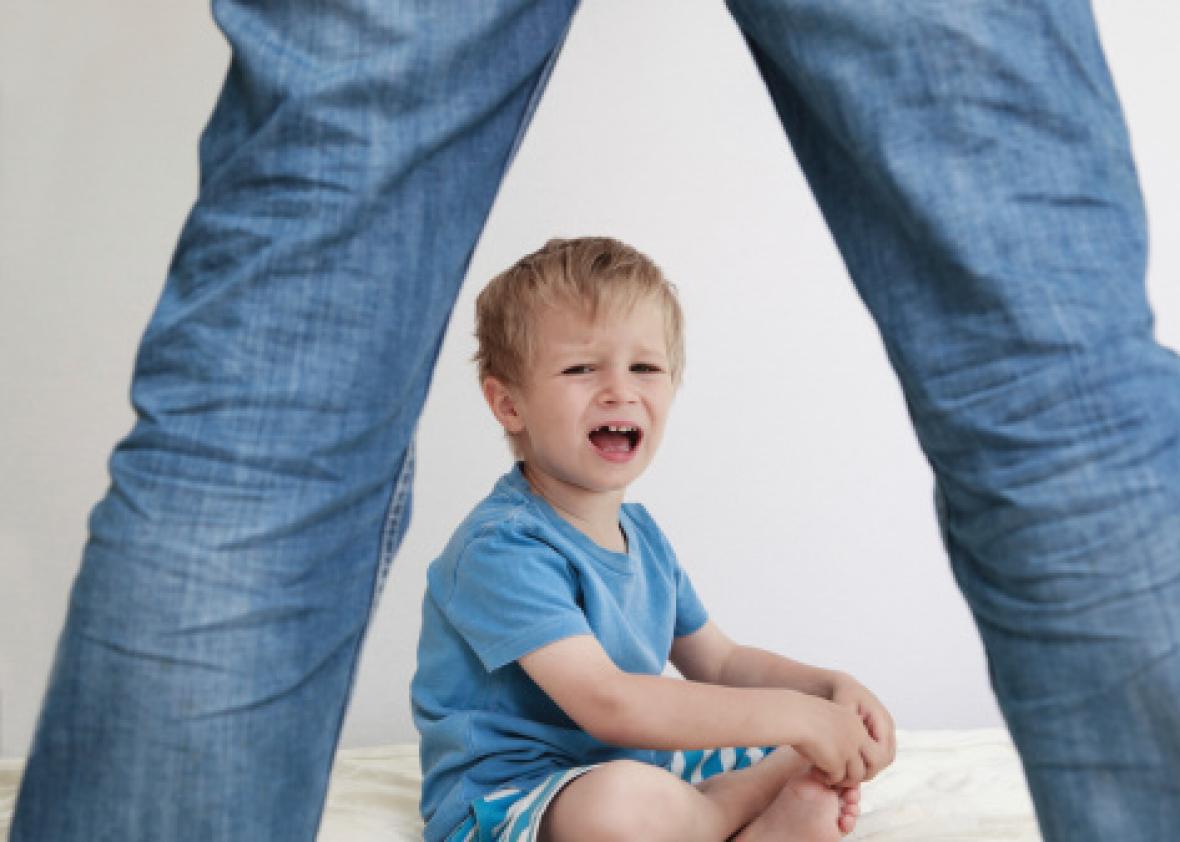While the outcome of the recent election has many anxiously examining the apparently widening chasm among Americans, new research suggests that when it comes to attitudes toward child-discipline, our country is slowly uniting.
According to a new article recently published in the journal Pediatrics, there was a decrease in the use of physical discipline and an increase in enthusiasm for timeouts among mothers of all socioeconomic backgrounds, from 1988 to 2011. Researchers Rebecca M. Ryan, Ariel Kalil, Kathleen M. Ziol-Guest, and Christina Padilla relied on data from four national studies conducted during this time period, each of which asked mothers how often they had spanked their kindergarten-aged child in the past week and what, hypothetically, they would be most likely to do if their children were to misbehave. Choices included physical discipline, timeout, and talking to the child.
They found that during this period the percentage of median-income mothers who endorsed physical punishment decreased from 46 percent in 1988 to 21 percent in 2011. Declines were uniform across all income-levels, and the poorest mothers continue to be more likely to spank their children than their wealthier counterparts. In 1988, around 50 percent of the poorest mothers endorsed physical punishment, compared to 30 percent in 2011. Over the same time period, the percentage of the wealthiest mothers who endorsed physical punishment decreased from 40 percent to 12 percent.
There was more convergence in regard to timeouts. The percentage of the poorest mothers who say they would use timeouts went from 45 percent in 1988 to 71 percent in 2011. The percentage of wealthy mothers who feel the same went from around 50 percent in 1988 to to 85 percent in 2011. The income-based gap in using talking to children as a response to misbehavior disappeared entirely during this period.
There is a growing body of research illustrating how physical punishment not only fails to work, but also can lead to antisocial behavior, aggression, mental health problems, and cognitive difficulties in children. Even anti-spanking skeptics worry that it can be hard for a parent to draw the line at what they might consider productive physical discipline when in the heat of the moment with a defiant child. Spanking one’s children is illegal in 42 countries, and the American Academy of Pediatrics has strongly opposed it since 1998.
While AAP-approved timeouts are far less harmful than spanking, the rising enthusiasm for them among mothers is destined to meet some resistance. In recent years, this disciplinary method has been the target of critique by a growing number of parents and child development experts who believe that positive reinforcement is the only way to healthily and effectively shape one’s child. In response, many parents and child development experts have called this criticism scientifically unfounded and say it is missing the distinction between a well-managed timeout and a poorly managed one.
In a recent article on Family Studies, Robert E. Larzelere, a professor of parenting at Oklahoma State University, provides a helpful overview this debate. He encourages parents to choose positive parenting discipline methods whenever possible, but believes that “opposing all negative consequences for all children all of the time is an unrealistic ideal for most parents—an ideal that has no adequate scientific support as an absolute for all children.” He believes the polarization of the time-out debate is counterproductive, because it makes parents believe that they have to pick one style of discipline. Instead, they need to understand the range of options considered safe and productive by experts and when to employ these different tactics.
In an accompanying editorial to the new paper in Pediatrics, Heidi M. Feldman, who was on the AAP committee behind the 1998 policy statement opposing physical discipline, says that the recent findings should encourage the Academy to do just this: “If attitudes and practices have changed, then pediatricians and the public may be ready for advice on alternative discipline methods. A new generation of pediatricians, allies from related fields, and parent advocates must collaborate on a new statement.”
Such advice should keep in mind that parents aren’t an always-mindful, fixed-point in the discipline equation, but beings vulnerable to frustration and exhaustion—just like their kids. Any disciplinary recommendation that takes the fragile emotional ecosystem that is the average family into account is bound to be far more effective than one that doesn’t.
